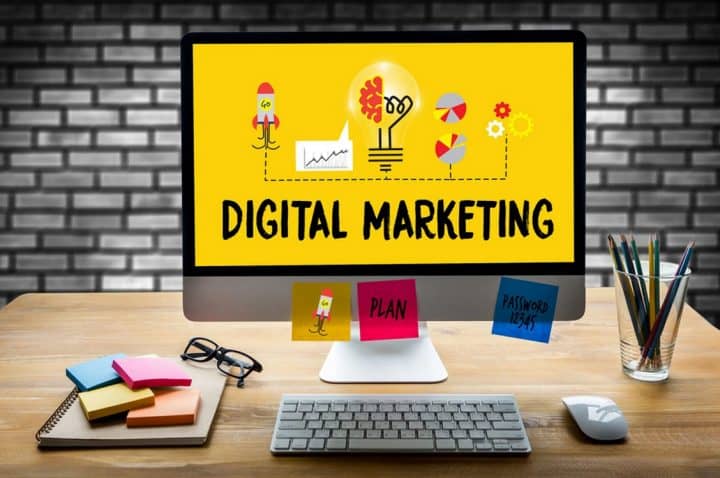The world of digital marketing can be a maze for beginners, but with the right compass, anyone can navigate their way to success. This comprehensive guide will not only introduce you to the fundamentals of digital marketing but also equip you with the knowledge you need to launch your own digital marketing strategies with confidence. Let’s dive in!
Understanding Digital Marketing
In the modern business landscape, an effective digital marketing strategy is indispensable. It involves leveraging various online channels to spread awareness about your brand, connect with your audience, and ultimately drive sales or other desired actions. Understanding the key components of digital marketing is crucial for its successful execution.
Definition and Key Components
At its core, digital marketing is the promotion of products or services using digital technologies. This can include various tactics such as search engine optimization (SEO), content marketing, social media marketing, email marketing, and more. Each of these tactics works in harmony to create a multifaceted digital marketing campaign.
Benefits for Businesses
The benefits of digital marketing for businesses are countless. It provides a cost-effective way to reach a wide audience, allows for specific audience targeting, and provides myriad tools to measure the success of your marketing efforts in real time.
Digital marketing is also incredibly versatile, allowing businesses to easily tweak their campaigns based on performance data and market trends. Furthermore, it helps build brand loyalty and offers a platform for engaging with customers on a personal level. Plus, on the Intellibright website, and other similar ones, you can learn more about how professionals who offer the services of digital marketing can help you out. That way, you can make a more informed decision on whether to do it yourself or hire an expert.
Setting Goals and Objectives
Before diving into the many tactics of digital marketing, it’s crucial to set clear goals and objectives. This step lays the foundation for all your marketing efforts and ensures that your strategies are aligned with your business’s overarching vision.
Identifying Target Audience
Understanding your target audience is the first step in setting your digital marketing goals. By creating buyer personas, and semi-fictional representations of your ideal customers based on market research and real data, you can target your marketing efforts more effectively.
Defining Goals and Objectives
Your digital marketing objectives should be specific, measurable, achievable, relevant, and time-bound (SMART). Whether it’s increasing website traffic, growing your email list, or improving sales, your goals should be tailored to your business’s unique needs.
Website and SEO Basics
Your website is your digital storefront, and SEO is the signpost that directs customers to your door. A well-designed website that’s optimized for search engines is a cornerstone of any digital marketing strategy.
Importance of a User-Friendly Website
A user-friendly website not only enhances the customer experience but is also favored by search engines. Key elements of a user-friendly website include mobile responsiveness, fast loading times, and intuitive navigation.
Basics of Search Engine Optimization (SEO)
SEO is the process of improving your website’s visibility in search engine results. This encompasses on-page SEO, which involves optimizing individual pages on your site, and off-page SEO, which focuses on improving your site’s authority through the acquisition of backlinks.
Content Marketing
Content is king in the digital marketing realm. It is the information, entertainment, and inspiration that draws your audience in and keeps them engaged with your brand.
Creating Valuable and Engaging Content
Your content should be geared towards providing value to your audience. This can be achieved through blog posts, articles, videos, infographics, and more. Consistently creating high-quality content can also boost your SEO efforts by increasing your site’s authority and relevancy.
Distribution Strategies
Creating content is only half the battle. Equally important is getting that content in front of your audience. Distribution strategies may include sharing on social media platforms, email newsletters, influencer collaborations, and more.
Social Media Marketing
Social media is more than just a platform for sharing content; it’s a powerful tool for building brand awareness, engaging with customers, and driving traffic to your website.
Utilizing Social Media Platforms
Different social media platforms cater to different demographics and content types. Understanding the nuances of each platform can help you tailor your message to the audience most likely to engage with it.
Building a Social Media Presence
Consistency is key when it comes to social media marketing. Regularly posting content, engaging with your audience, and maintaining a cohesive brand presence can help build a loyal following.
Email Marketing
Despite the rise of social media, email marketing remains one of the most effective ways to communicate with your audience. It’s a direct line to your customer’s inbox, allowing for personalized and targeted messaging.
Benefits of Email Marketing
Email marketing is a cost-effective way to drive repeat business, upsell products, and nurture customer relationships. It also has a high ROI compared to other digital marketing strategies.
Building an Email List and Creating Effective Campaigns
Building an email list starts with offering something of value, such as a discount or exclusive content, in exchange for a potential customer’s email address. Campaigns should be well-crafted, with attention to the timing, frequency, and personalization of emails.
Paid Advertising
While many digital marketing tactics can be implemented with minimal cost, paid advertising can significantly accelerate your business’s growth by placing your brand directly in front of your target audience.
Overview of Different Paid Advertising Channels
From pay-per-click (PPC) ads on search engines to social media ads, there are numerous paid advertising channels to explore. Each has its advantages and targets specific audience segments.
Budgeting and Targeting Strategies
Effective paid advertising requires a clear understanding of your goals, your audience, and a well-defined budget. With tools provided by platforms like Google Ads and Facebook, you can precisely target your ads to those most likely to convert.
Analytics and Tracking
Digital marketing is not a set-it-and-forget-it endeavor. It requires constant monitoring and refinement based on performance data. Analytics tools can provide insight into the effectiveness of your digital marketing efforts.
Importance of Tracking and Analyzing Data
Tracking and analyzing data allows you to understand what’s working and what’s not. This data can inform decisions on where to allocate resources, which tactics to adjust, and how to optimize for better results.
Tools for Measuring Success
From Google Analytics to social media insights, there are numerous tools available to measure the success of your digital marketing endeavors. Understanding how to use these tools effectively is a critical skill for any digital marketer.

Starting your digital marketing journey may seem daunting, but breaking it down into these fundamental areas can provide a clear roadmap to success. By understanding the key components of digital marketing, setting clear goals and objectives, mastering essential tactics, and measuring your progress, you can create a robust digital marketing strategy that delivers real business results.
Be patient, stay informed about the latest digital marketing trends, and don’t be afraid to experiment with new strategies. With persistence and the right approach, your digital marketing efforts will pay off, and your business will thrive in the online marketplace.


Latest Comments